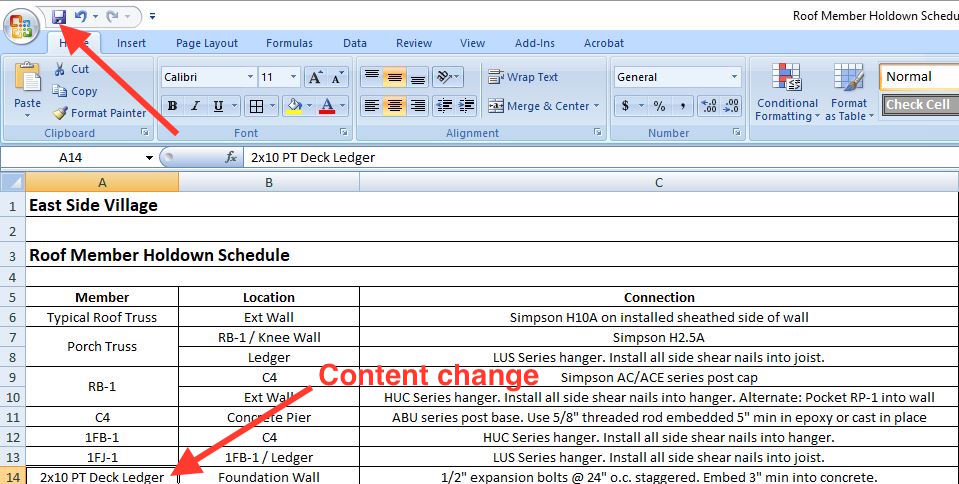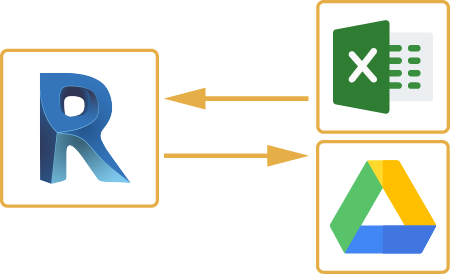Damaging Obstacles: Excel Importation Techniques for Advanced Revit Users
Explore numerous data importation techniques and master Excel integration to boost your Revit modeling capabilities. With our ideas and techniques, you can overcome importation challenges and come to be a real expert in making use of Excel for your Revit jobs.
Advanced Revit Users: Leveraging Excel for Importation
You can conveniently take advantage of Excel for importation as an innovative Revit customer. Excel is a powerful device that can greatly improve your operations and effectiveness in Revit. With its capability to deal with large amounts of data and perform complex computations, Excel can be an important asset in handling and arranging your task info.
One method to take advantage of Excel for importation is by using the "Link Excel" attribute in Revit. This attribute enables you to link an Excel spreadsheet directly right into your Revit job, allowing you to update and synchronize information between both programs. When dealing with schedules or tracking modifications in your project., this can be particularly helpful.
Another method to make use of Excel is by utilizing the "Import/Export" function in Revit. This function allows you to import and export information between Revit and Excel, giving you the flexibility to deal with information in both programs. You can import data from Excel right into Revit to produce elements such as wall surfaces, areas, or doors, and you can also export data from Revit to Excel for additional analysis or coverage.

Exploring Data Importation Techniques in Revit Utilizing Excel
Discovering just how to import information from Excel right into Revit uses reliable approaches for incorporating details. When you import information from Excel, you can flawlessly transfer data such as room schedules, material lists, and equipment information right into your Revit task. This procedure enables you to save effort and time by preventing manual data access.
To import information from Excel right into Revit, you can use the "Import/Export" function. This function enables you to map the Excel data areas to the equivalent Revit specifications, making sure that the info is properly assigned within the model. By picking the ideal import choices, you can manage how the information is imported and exactly how it engages with your project.
One more approach for importing data from Excel right into Revit is by utilizing Eager beaver. With Dynamo, you can develop custom-made scripts that import information from Excel and manipulate it within your Revit job.
Mastering Excel Combination for Advanced Revit Modeling
One crucial technique is importing data from Excel spread sheets straight right into your Revit design. With a couple of straightforward steps, you can map the Excel columns to the matching Revit criteria and import the data properly.
Another helpful approach is exporting data from Revit to Excel. This enables you to draw out information from your design, such as timetables or material quantities, and assess it in Excel using formulas, graphes, or various other powerful tools. By leveraging the capabilities of Excel, you can do complex calculations, develop custom reports, and gain beneficial insights right into your task.
Along with data transfer, Excel combination can automate recurring jobs in Revit. By developing macros or manuscripts in Excel, you this contact form can automate procedures like developing sights, creating sheets, or using common families - import excel into revit. This not only saves time but additionally makes certain uniformity throughout your job
To grasp Excel combination in Revit, it is important to understand the data framework and exactly how Revit engages with Excel. By familiarizing yourself with the available tools and strategies, you can open the full Going Here capacity of Excel combination and take your Revit modeling to the following degree.
Conquering Importation Obstacles: Excel Techniques for Revit Specialists
When getting over importation difficulties, it's important to be acquainted with efficient Excel methods that can profit professionals in Revit. As an advanced Revit customer, you understand the value of seamlessly importing information from Excel right into your jobs.

An additional useful strategy is using the "Transpose" feature in Excel. This enables you to convert information from rows to columns or the other way around. When importing data into Revit, this can be particularly handy when you have data in an upright style in Excel, yet you need it to be in a straight format in Revit.
In addition, utilizing Excel solutions such as VLOOKUP and INDEX-MATCH can greatly assist in mapping information from Excel to Revit. These solutions enable you to look for particular values in Excel and get corresponding information from an additional column. This can conserve you effort and time when importing big datasets right into Revit.
Excel Data Importation Advice for Advanced Revit Users
By acquainting on your own with reliable Excel methods and pointers, you can boost your information importation procedure as a sophisticated individual of Revit. Additionally, utilizing Excel's "Paste Special" feature permits you to paste data from Excel into Revit while maintaining formatting, such as cell shade or font design. An additional handy method is to make use of Excel's get more "Discover and Change" feature to rapidly make modifications to your data before importing it right into Revit.
Verdict
You have actually currently learned beneficial methods for importing data from Excel right into Revit as a sophisticated user. By leveraging the power of Excel assimilation, you can enhance your modeling procedure and conquer any importation tests that may arise. With these pointers and methods, you will certainly be able to understand information importation and enhance your Revit abilities. Go in advance, break those obstacles and excel in your Revit tasks!

When importing data into Revit, this can be specifically useful when you have information in an upright format in Excel, however you require it to be in a horizontal style in Revit.
In addition, utilizing Excel formulas such as VLOOKUP and INDEX-MATCH can substantially assist in mapping data from Excel to Revit. Furthermore, making use of Excel's "Paste Unique" feature enables you to paste information from Excel right into Revit while keeping format, such as cell color or font style.